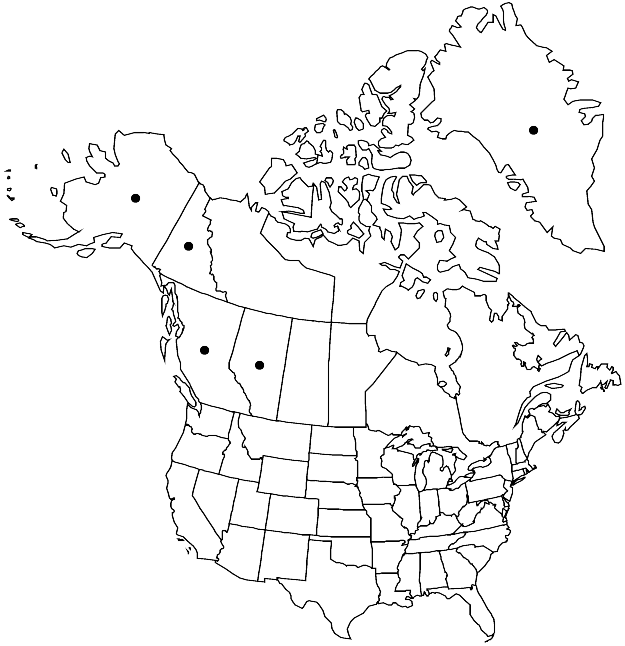Brachythecium coruscum
Kongel. Norske Vidensk. Selsk. Skr. (Trondheim) 1908(3): 3. 1908.
Plants medium-sized to large, in loose to fairly dense mats, pale stramineous, pale yellow, rich golden, or light brown. Stems to 7 cm, creeping, ascending to upright, terete-foliate, irregularly pinnate, branches to 7 mm, straight to slightly flexuose, terete-foliate. Stem leaves appressed, straight or slightly falcate, closely to more rarely loosely imbricate, ovate, broadest at 1/7–1/5 leaf length, concave, plicate, 1.5–2.4 × 0.5–1 mm; base slightly narrowed, narrowly short-decurrent; margins plane or often recurved almost throughout, entire to slightly serrulate, usually more serrulate in acumen; apex gradually tapered, short to moderately acuminate; costa to 40–70% leaf length, strong proximally, gradually tapering distally, often very weak near end, terminal spine absent; decurrency cells short-rectangular; alar cells subquadrate to short-rectangular, small, 12–20 × 10–13 µm, walls moderately thick, region extensive, of 6–15 × 6–10 cells; laminal cells elongate or rarely short-rhombic throughout, 30–80 × 6–8 µm; basal cells to 8(–10) µm wide, region in 2 or 3 rows. Branch leaves smaller, narrower. Sexual condition dioicous. Sporophytes unknown.
Habitat: Soil, rock, Arctic and alpine environments
Elevation: low to high elevations (0-3300 m)
Distribution

Greenland, Alta., B.C., Yukon, Alaska, n Eurasia.
Discussion
Brachythecium coruscum is quite common in Greenland, Alaska, and Arctic Canada. The species is similar to B. albicans, from which it differs principally in short leaf decurrencies that rarely come off with detached leaves and shorter laminal cells, in many leaves only few cells being longer than 50 µm. Plants of B. coruscum are usually more enriched with yellow than B. albicans, which is much paler and whitish to stramineous. The leaf acumina are erectopatent to patent, often falcate-secund, and the alar regions are square to elongate.
Selected References
None.